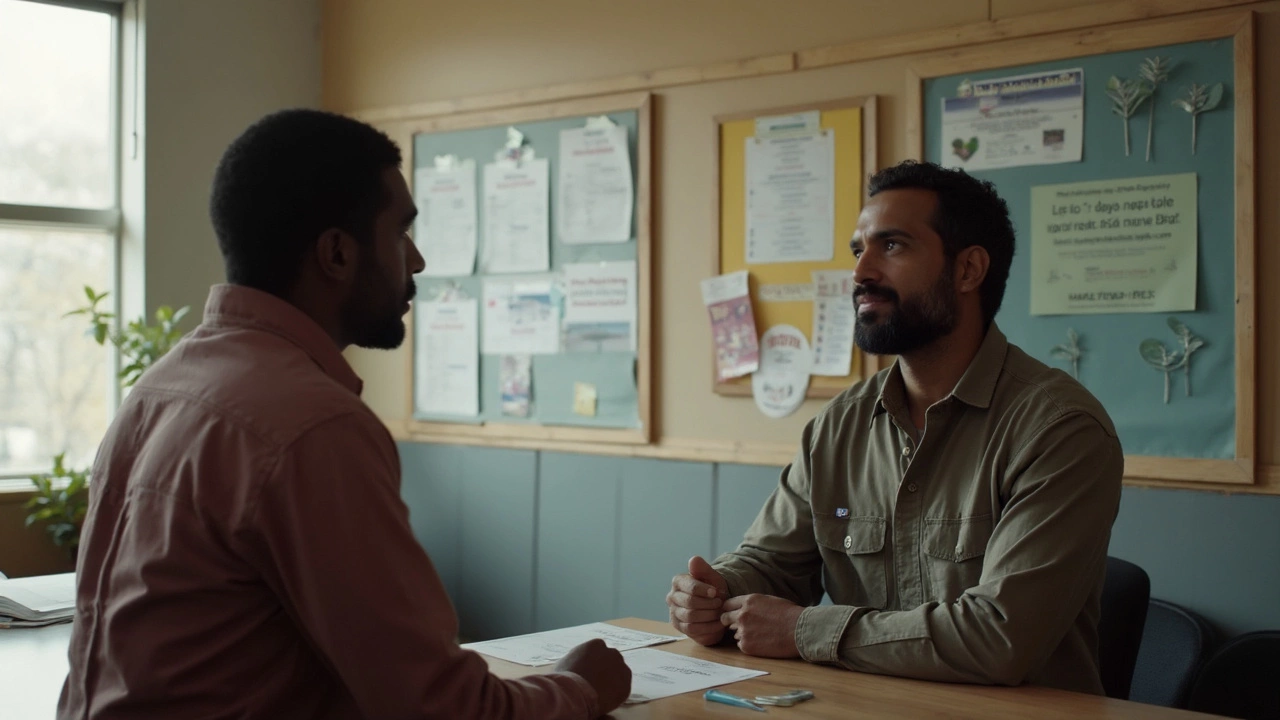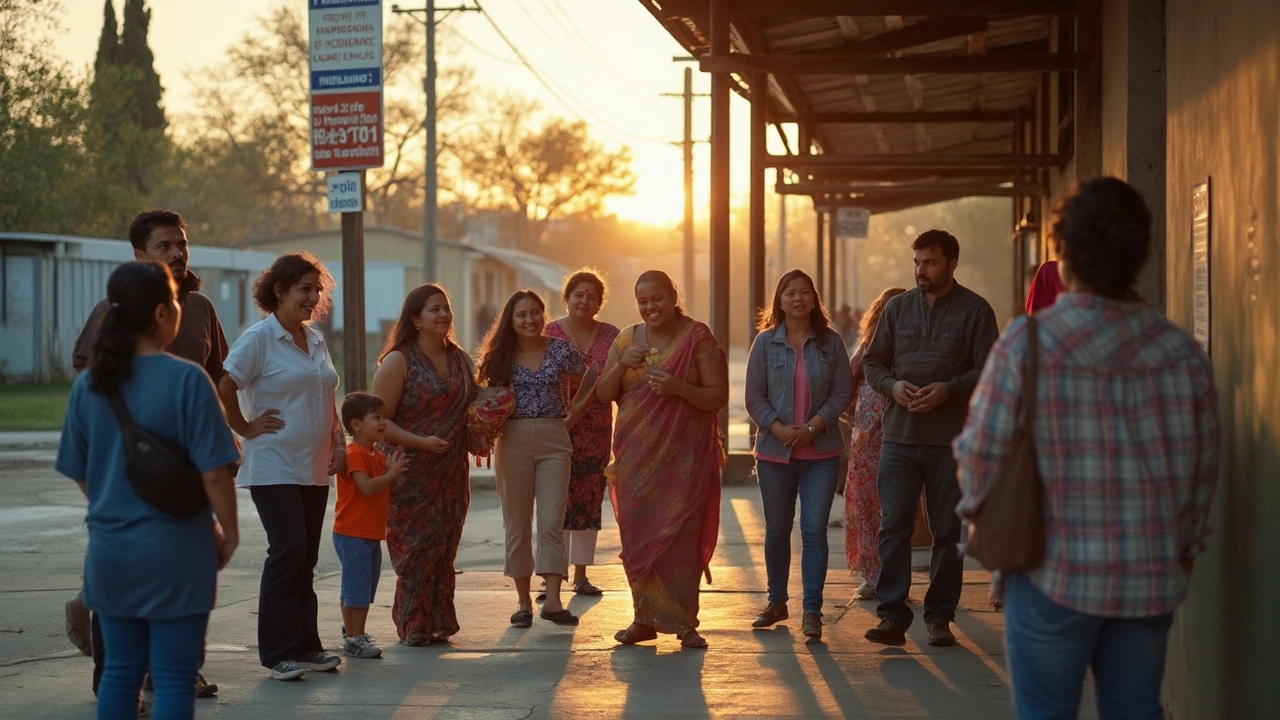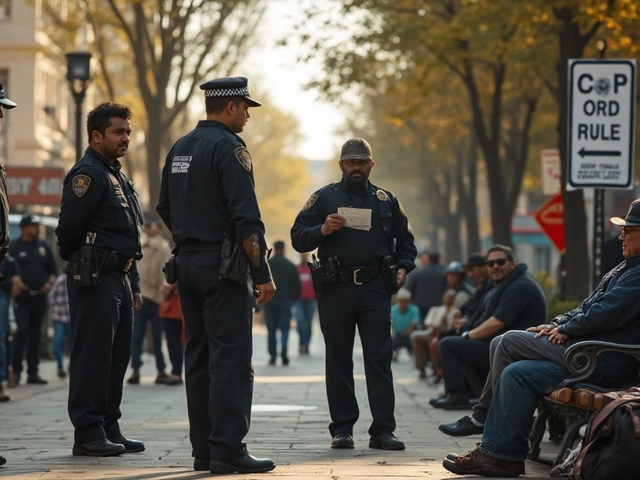Finding help when you’re struggling in Texas feels overwhelming. You might wonder if homeless shelters are just a roof, or if there’s more help behind those doors. Truth is, shelters here do more than many people think.
If you’re low on cash or suddenly without a home, shelters are not just for those living on the street—they’re open for anyone who can’t afford safe housing, including families and even teens. Shelters aren’t just about sleeping indoors; they provide meals, showers, basic supplies, and sometimes even job connections.
Some shelters partner with clinics for basic healthcare or offer a mailing address for job applications. Others step in with case managers who actually sit down with you, help with food stamp sign-ups, or show you how to get Medicaid. Places in Dallas and Houston, for example, often offer help filling out forms or accessing mental health services right on site.
If you’re in a tough spot and feel stuck, don’t assume you have to sort everything alone. Taking that first step to a shelter can connect you with people and programs you didn’t know existed. It’s not fancy, but when every dollar counts and you’ve got nowhere else, it’s a lifeline.
- Who Can Use Texas Homeless Shelters?
- Core Support Offered by Shelters
- How to Find and Get Into a Shelter
- Hidden Perks Shelters Don’t Advertise
- Tips for Making the Most of a Shelter Stay
Who Can Use Texas Homeless Shelters?
Not everyone realizes how wide the net is for homeless shelters in Texas. The basic rule? If you don’t have a safe or steady place to sleep, you can probably get help. It isn’t just for people living on the street—lots of folks who stay in shelters were sleeping in cars, on couches, or bouncing between friends. Families, singles, older adults, and even teens can all connect with shelters in most major cities.
You don’t always have to prove you’re totally out of money to use a shelter, but most do ask a few questions. Usually, they’ll want to know:
- Are you currently homeless or about to be?
- Do you have kids with you?
- Are you dealing with violence at home that makes it unsafe to stay?
- Are you a veteran?
Some shelters focus on special groups—like single women, those with mental health concerns, or families with young kids. There are even places just for teens or people dealing with addiction. The most common requirement across Texas shelters is that you can safely be in a group living environment. If someone has severe mental health or medical issues, the shelter might help find another option, like a medical respite or crisis center.
For comparison, check out this sample of typical intake criteria at Texas shelters:
| Shelter Name | Who Can Apply? | Extra Requirements |
|---|---|---|
| Austin Resource Center for the Homeless | Adults 18+ | No active warrants, must not be a threat to others |
| Star of Hope (Houston) | Single women & families | ID requested; sobriety program for some residents |
| Dallas Life Foundation | Men, women, children | No recent violence, TB test required after entry |
Most places don’t ask about immigration status and are clear that anyone who’s homeless—or about to be—can walk in for help. For shelters focused on families, some require you prove you have the kids in your custody. Pro tip: If a shelter’s full, ask the staff for other nearby options or waitlists. Don’t give up after one try; space often opens up day by day.
Core Support Offered by Shelters
Most people think a homeless shelter in Texas is just a place to crash for the night, but that’s really just the start. Here’s a breakdown of what you can usually count on once you’re inside the doors—whether you're in Houston, Dallas, Austin, or a smaller town.
The first thing shelters offer is a safe bed. It sounds basic, but for a lot of folks, safety is the thing they’re missing most on the street. Most shelters split up sleeping areas for men, women, and families. In bigger cities, you’ll find shelters with separate wings or even buildings for parents with kids. The Salvation Army, for instance, runs several family-focused shelters around Texas.
Next up: food. Almost every Texas shelter provides at least one hot meal a day, often two or even three. They don’t just hand out sandwiches either—you can get a real, cooked breakfast or dinner. According to 2024 data from the Texas Homeless Network, big city shelters serve over 1,000 meals daily when demand is high.
Staying clean matters, too, especially if you’ve been out in the heat. Showers, restrooms, and sometimes laundry machines are available. Some places give out soap, toothbrushes, or other personal basics.
But here’s where shelters really start to help long-term. Most connect guests to local services. They can help you replace lost IDs, fill out job applications, and set up doctor appointments. For many people, getting help with a resume or having access to a phone to call potential landlords is a game-changer.
Let’s lay it out in a quick list so you know what to expect in a typical Texas homeless shelter:
- Safe beds and sleeping areas for individuals and families
- Hot meals daily, plus snacks in some shelters
- Showers and bathrooms, sometimes laundry facilities
- Access to basic hygiene items
- Help connecting to jobs, health care, and benefits like SNAP
- Support for getting new IDs or legal documents
- Case managers to guide you towards housing programs
Some places go further, especially in cities: they offer mental health counseling, drug recovery groups, or even tutoring for kids staying with their parents. Shelters don’t ignore pets either—Houston’s Star of Hope, for example, has kennels so folks don’t have to choose between safety and keeping their dog.
| Service | % of Texas Shelters Offering (2024) |
|---|---|
| Beds/Safe Sleeping Area | 100% |
| Daily Hot Meals | 93% |
| Showers & Hygiene | 88% |
| Job or Benefit Help | 74% |
| Mental Health/Recovery Groups | 41% |
So, if you or someone you care about needs support, remember shelters aren’t just about a place to sleep. They really do step in with the essentials and offer a path forward. The key is to get in the door and ask—help is usually just a question away.

How to Find and Get Into a Shelter
When things go south and you need a place to stay right away, getting into a homeless shelter in Texas isn’t as hard as it sounds, but you’ve got to know where to look and what to expect. Start by calling 2-1-1, the statewide helpline that connects people to nearby shelters and emergency housing. You can also find updated shelter info online through the Texas Homeless Network or local city websites. Many cities, like Houston and Dallas, post open bed counts daily—just a quick online check can save a wasted trip.
Most Texas shelters work on a first-come, first-served basis. That means showing up early in the day gives you the best chance of landing a bed, especially in the colder months when spots fill up fast. Some shelters let you reserve a spot by phone, but not all do. A lot of places also want to see a photo ID, but if you lost yours, don’t panic—staff usually help you with temporary workarounds. People with families, disabilities, or special needs sometimes get priority for certain beds, so be upfront about your situation.
Here’s what you’ll usually need to get in:
- Photo ID (driver’s license, school ID, or even expired ID in some cases)
- Proof you’re homeless or don’t have a safe place (sometimes just your word is enough)
- For families, kids’ birth certificates can be helpful, but not a deal-breaker
- Basic info: name, date of birth, and maybe last address
People often worry about background checks or paperwork, but most Texas shelters don’t turn you away for lacking documents or having minor legal issues. A few, usually family shelters, might do quick checks for everyone’s safety. Also, if you don’t have transportation, some cities offer free bus rides to shelters if you explain your situation to the driver.
If you’re lost on where to start, drop by a public library. Staff there know the drill and can point you to reliable homeless shelters or let you use the computers to look up availability and locations. Also, many churches in bigger cities host pop-up shelters during extreme weather or around holidays—worth calling their main office or checking their bulletin boards.
Just to give you an idea of shelter access across large Texas cities, check out this simple breakdown:
| City | # of Shelters (2025) | 24/7 Access | Family Beds Available |
|---|---|---|---|
| Houston | 30+ | Yes, most locations | Yes |
| Dallas | 25+ | Some | Yes |
| Austin | 15+ | Few | Limited |
| San Antonio | 18+ | Some | Yes |
Once you land a spot, staff will walk you through house rules, and how to use their resources. The main tip: don’t wait until you’re completely out of options to look for help. Shelters fill fast, and showing up sooner is always better than sleeping rough. Don’t hesitate to ask questions when you check in—it's your right to know what’s available to you.
Hidden Perks Shelters Don’t Advertise
Everyone knows homeless shelters offer a place to sleep and a meal, but a bunch of lesser-known benefits can really change things for poor folks in Texas. Let’s break down what most people don’t realize shelters quietly provide.
- Wi-Fi and Device Charging: Plenty of Texas shelters now have free Wi-Fi and spots to charge your phone. This helps with job hunts, staying connected with family, or even just keeping up with schoolwork for your kids.
- Transportation Help: A lot of larger city shelters give out free bus passes or even rides to job interviews, doctors, or government offices. In Austin, for instance, several shelters partner with local transit and nonprofits to make this happen.
- Lockers and Storage: Some shelters—especially in Dallas and San Antonio—offer secure storage for bags and important documents. Losing your ID or important papers on the street can derail everything, so this is a bigger deal than it sounds.
- Legal Aid Access: Shelters in bigger cities sometimes host legal clinics, letting folks get free advice on stuff like food stamps, tenant rights, or clearing up small criminal cases. Texas RioGrande Legal Aid teams up with many shelters for this exact reason.
- Child and Youth Services: When you’ve got kids, some shelters run homework help, play areas, or even after-school tutoring programs. These extras are lifesavers for parents trying to keep some routine for their kids.
You might not see these perks on a flier or website, but folks who’ve stayed in shelters mention how huge they are once you land there. If you’re considering a shelter, ask about these supports. Not every location has everything, but they’ll usually tell you who does—even if it means calling another shelter.
| Hidden Perk | How Many TX Shelters Offer (est.) | Best Cities for Access |
|---|---|---|
| Free Wi-Fi & Charging | 70% | Houston, Dallas, Austin |
| Bus Passes/Transport | 45% | San Antonio, Austin |
| Secure Storage | 30% | Dallas, San Antonio |
| Legal Help | 40% | Houston, Dallas |
| Homework Tutoring | 20% | Houston, Austin |
These hidden benefits don’t make homeless shelters glamorous, but they sure boost your chances when you’re trying to get back on track in Texas.

Tips for Making the Most of a Shelter Stay
Living in a homeless shelter in Texas isn’t anyone’s dream, but some clear moves can turn a rough spot into a launchpad. People who get the most out of these places know the rules, stay open to help, and use every extra resource shelters offer.
- Show up early. Beds fill up fast—especially in cities like Houston and Dallas. Most shelters open intake late afternoon, but folks start lining up an hour or more before. The earlier you arrive, the better your shot at a safe place to sleep.
- Ask about everything. Don’t be shy. Even if something’s not posted on a flyer, staff can clue you in on free bus passes, clothing banks, food pantries, or laundry tokens. Shelters sometimes partner with local dentists or healthcare clinics for check-ups or flu shots.
- Keep paperwork close. If you have any ID, Social Security card, or proof of need (like a SNAP letter), keep it safe and handy. Some places can help you get replacement documents if yours are gone.
- Get to know the case manager. They’re not just filling out forms. These are your go-to people for job help, rental applications, or finding permanent housing. Ask about their weekly hours and drop by early in their shift before things get busy.
- Respect the rules, but don’t be afraid to ask for special help. Got a job interview early? Tell staff. Need help with mental health? Say it out loud. Staff can work with you if they know what’s blocking your next step.
- Use the address. Most Texas shelters will let you use their address to get mail; crucial if you need to apply for jobs or official ID. It might not seem like much, but it’s one of the little things that open doors.
It helps to keep track of daily routines and curfews. Most shelters have a strict in-and-out policy, and missing curfew even once can mean losing your spot for the night.
| Resource | Percentage of TX Shelters Offering |
|---|---|
| Meals & Food Pantries | 98% |
| Job Support or Referrals | 54% |
| Mailing Address Service | 74% |
| Basic Healthcare Access | 43% |
Many places allow you to stay 30 or even 90 days, sometimes longer for families or if you’re making progress on job applications. Using that time right—working with staff, applying for benefits, looking for work—can make all the difference.
“The best thing you can do is use every single resource shelters offer. If you ask for help, you’ll usually find more than you expected.” — Megan R., Social Services Supervisor, Austin
It might feel tough asking for help, but shelters want you to get back on your feet. Tap into their network, try out what they suggest, and don’t let the system wear you down. You never know what door could open next.





